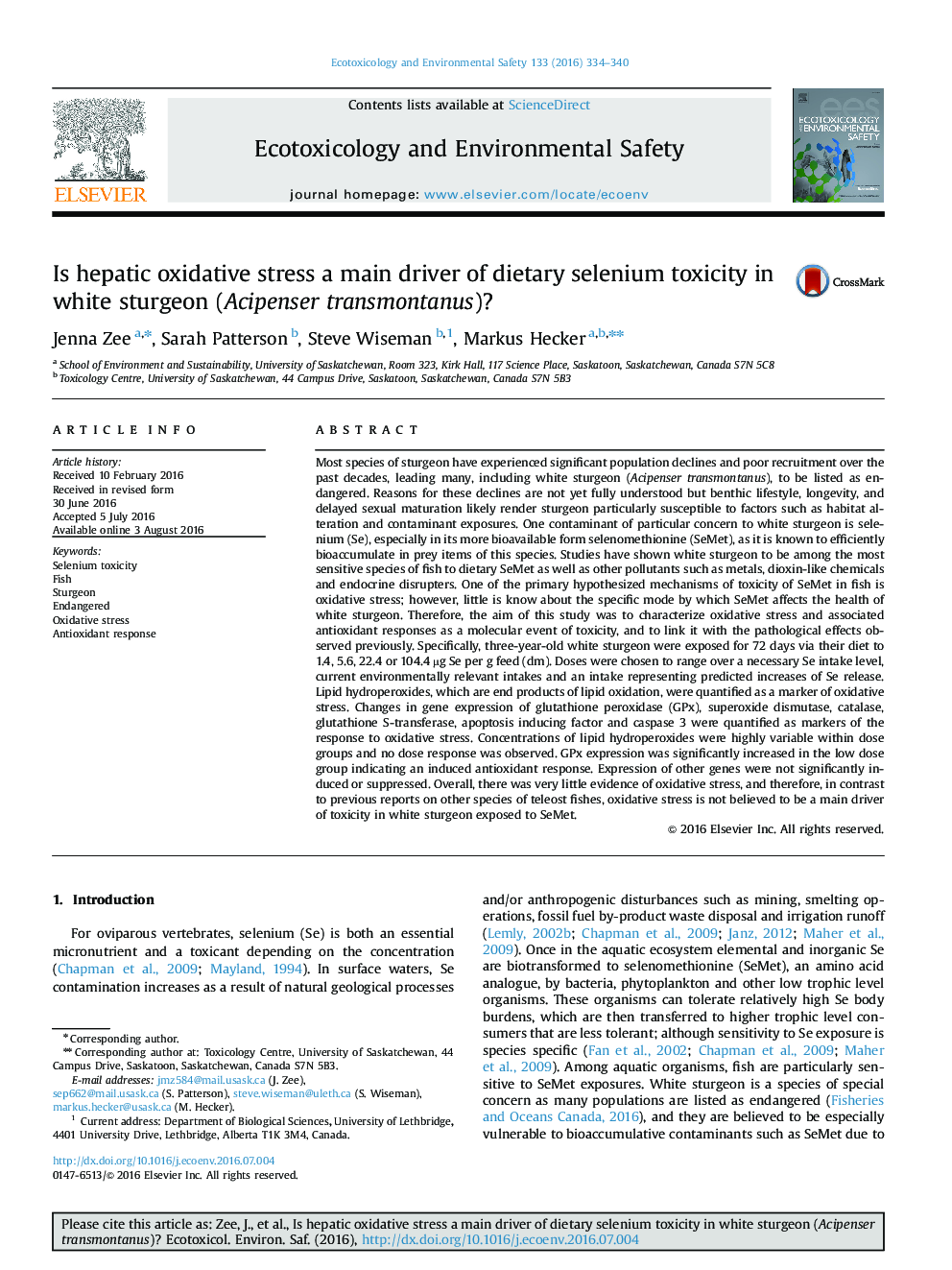| کد مقاله | کد نشریه | سال انتشار | مقاله انگلیسی | نسخه تمام متن |
|---|---|---|---|---|
| 4419018 | 1618930 | 2016 | 7 صفحه PDF | دانلود رایگان |

• Oxidative stress response was monitored after exposure to excess dietary selenium.
• Concentration of lipid hydroperoxides in liver was not different between dose groups.
• Glutathione peroxidase gene expression was induced at 5.6 ug Se/g feed exposure.
• Oxidative stress does not appear to be a main driver of selenosis in white sturgeon.
Most species of sturgeon have experienced significant population declines and poor recruitment over the past decades, leading many, including white sturgeon (Acipenser transmontanus), to be listed as endangered. Reasons for these declines are not yet fully understood but benthic lifestyle, longevity, and delayed sexual maturation likely render sturgeon particularly susceptible to factors such as habitat alteration and contaminant exposures. One contaminant of particular concern to white sturgeon is selenium (Se), especially in its more bioavailable form selenomethionine (SeMet), as it is known to efficiently bioaccumulate in prey items of this species. Studies have shown white sturgeon to be among the most sensitive species of fish to dietary SeMet as well as other pollutants such as metals, dioxin-like chemicals and endocrine disrupters. One of the primary hypothesized mechanisms of toxicity of SeMet in fish is oxidative stress; however, little is know about the specific mode by which SeMet affects the health of white sturgeon. Therefore, the aim of this study was to characterize oxidative stress and associated antioxidant responses as a molecular event of toxicity, and to link it with the pathological effects observed previously. Specifically, three-year-old white sturgeon were exposed for 72 days via their diet to 1.4, 5.6, 22.4 or 104.4 µg Se per g feed (dm). Doses were chosen to range over a necessary Se intake level, current environmentally relevant intakes and an intake representing predicted increases of Se release. Lipid hydroperoxides, which are end products of lipid oxidation, were quantified as a marker of oxidative stress. Changes in gene expression of glutathione peroxidase (GPx), superoxide dismutase, catalase, glutathione S-transferase, apoptosis inducing factor and caspase 3 were quantified as markers of the response to oxidative stress. Concentrations of lipid hydroperoxides were highly variable within dose groups and no dose response was observed. GPx expression was significantly increased in the low dose group indicating an induced antioxidant response. Expression of other genes were not significantly induced or suppressed. Overall, there was very little evidence of oxidative stress, and therefore, in contrast to previous reports on other species of teleost fishes, oxidative stress is not believed to be a main driver of toxicity in white sturgeon exposed to SeMet.
Journal: Ecotoxicology and Environmental Safety - Volume 133, November 2016, Pages 334–340